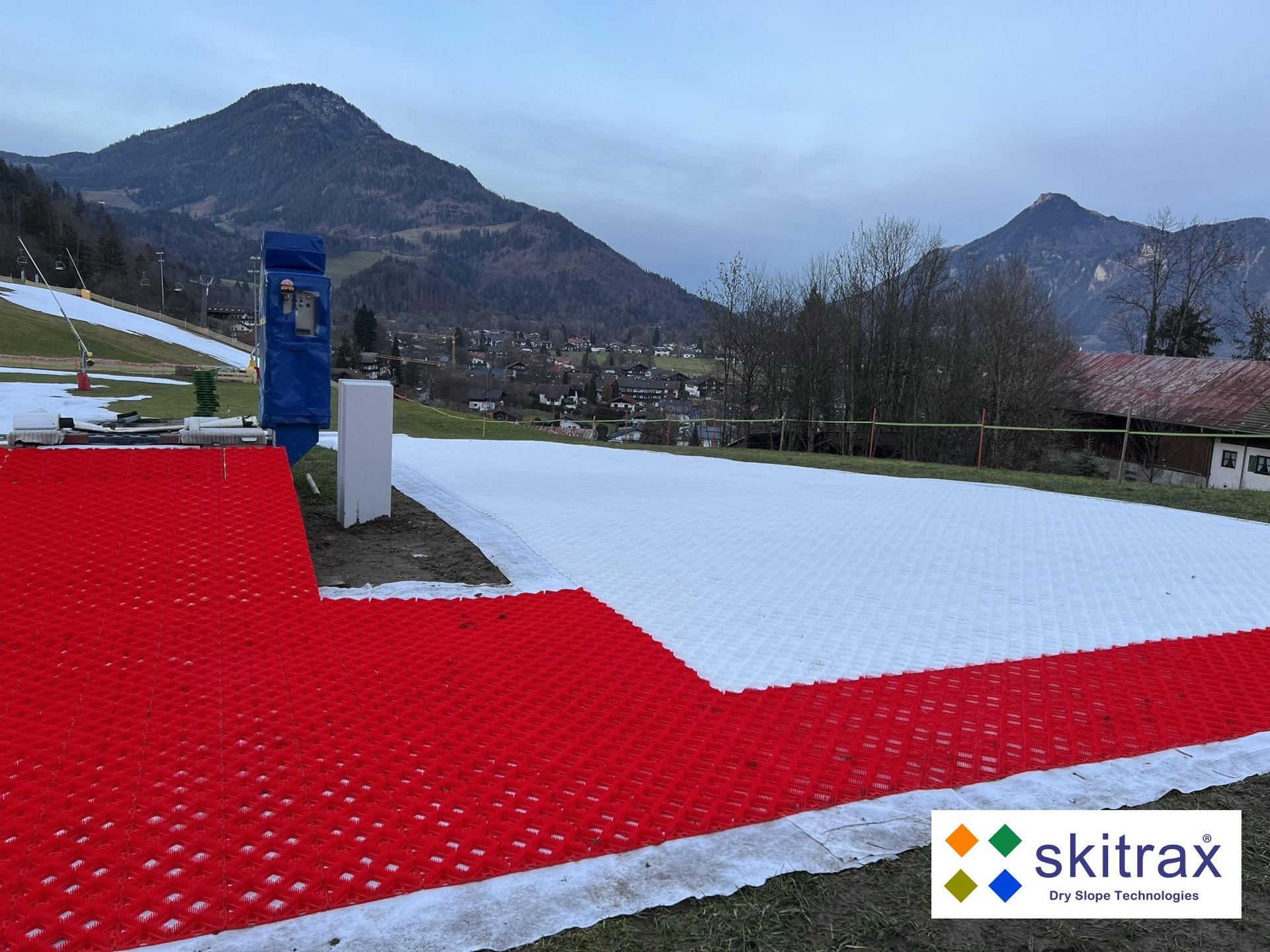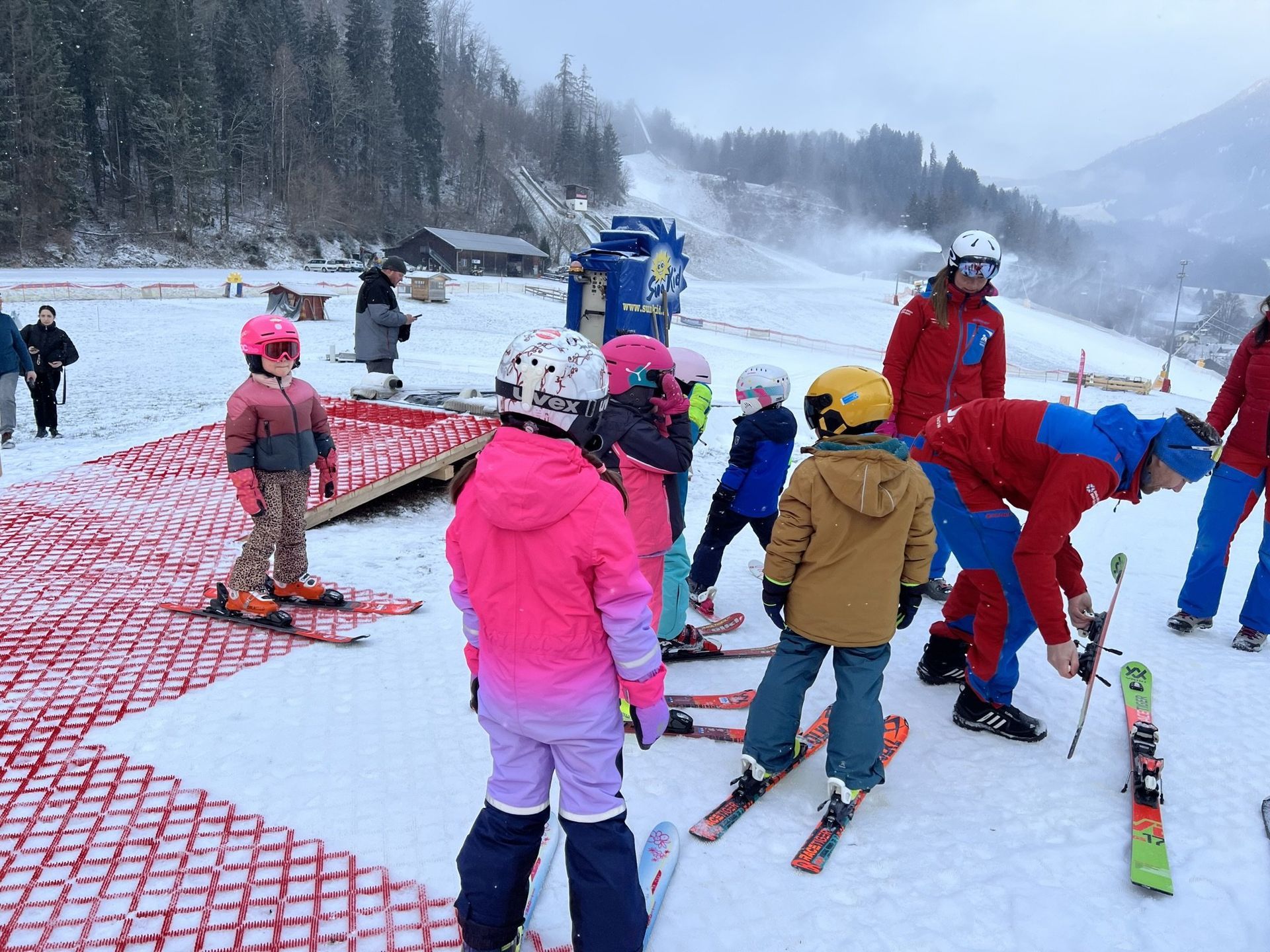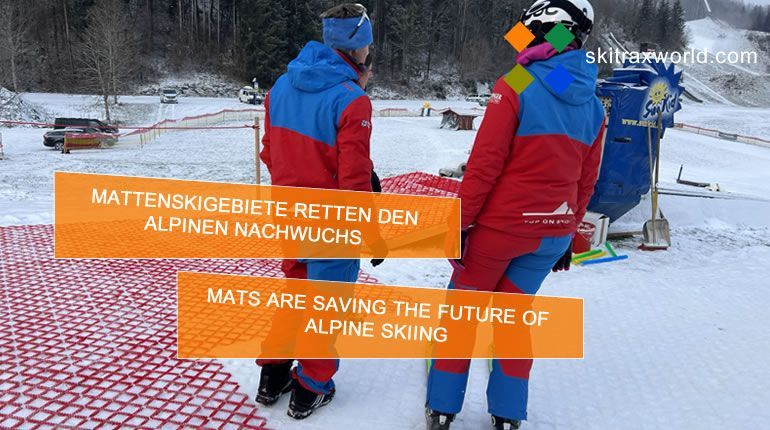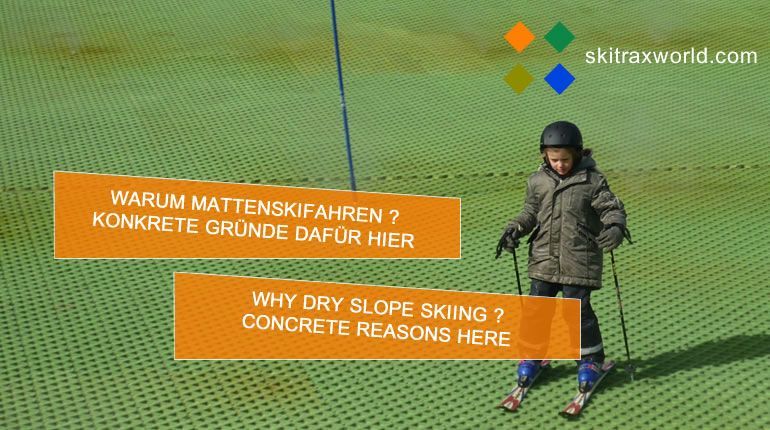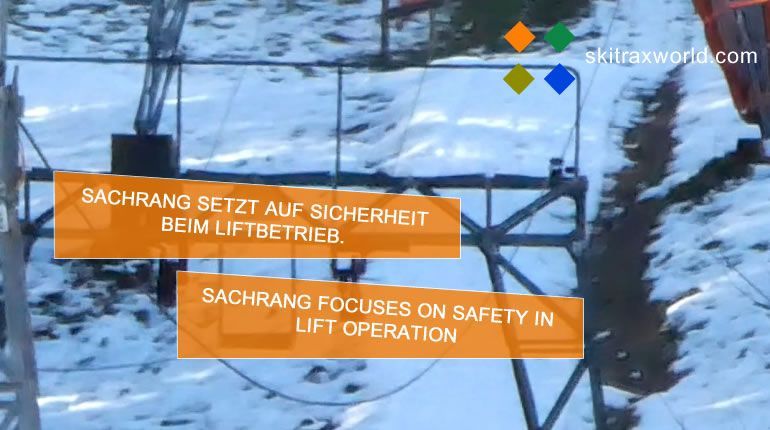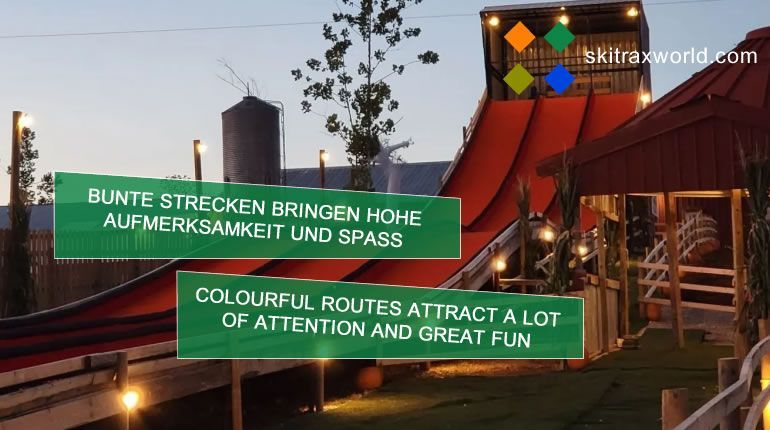Positive CO²-Bilance on alpine dry ski slope
Alpine Dry Slope amazes with calculation
Not all that glitters is gold! An alpine dry slope area is quickly built, but how sustainable is the installation? What is their CO2 balance? A calculation on this was carried out in January 2023 based on the built alpine dry ski slope in the children's area at the Hocheck adventure mountain in Oberaudorf (GER).
What was built?
The synthetic slope in the practice area has a length of approx. 76 meters as well as a width of approx. 7.25 meters, a total of approx. 2.3 tons of plastic (for slope + fleece ) was laid on approx. 560 sqm for this purpose. The production of 1 ton of plastic causes approx. 2 tons of CO² emission, the energy expenditure for the recycling at the end of the life span causes additionally approx. 3 tons of CO² emission. The individual elements for the plastic runway are produced in Bavaria, the plastic runway has a high UV resistance and a durability of at least 15 years.
How much CO² is emitted during construction and dismantling?
For the transport of the plastic parts, the required installation accessories, the construction as well as the ongoing maintenance and deconstruction, an additional flat rate of 1.5 tons of CO² emissions per 1 ton of plastic runway is applied. This results in the following values for the production, the ongoing operation as well as the deconstruction and recycling of this runway: 2.3 tons of plastic runway x 6.5 tons of CO² emissions = in total 14.95 tons of CO² emissions caused by the plastic runway at the Oberaudorf-Hocheck adventure mountain for production, construction, maintenance, deconstruction and recycling with a durability of at least 15 years.
What CO² emissions are saved by skiing on this plastic slope close to home?
From the end of October to the end of December each year, the slope is intended to ensure that ski courses for beginners and returning skiers can be held, irrespective of the snow conditions. This may eliminate the need to travel by private transport (car) to more distant (glacier) ski resorts.
What is the CO² saving potential?
If we assume that skiing lessons can be offered on the synthetic slope on 8 additional weekends per year - which are snowless in the region - this results in the following savings in 15 years:
An average of 8 weekends of ski instruction on the mat ski slope with no snow in the region (Saturday + Sunday 30 students each, this results in 60 ski days per weekend), 8 weekends x 60 ski days x 15 years = results in 7,200 ski days.
If only 10% of all course participants were to travel to higher ski resorts in Tyrol (Hochfuegen or Hintertux Glacier) to complete their ski course there, then the following CO² emissions would result from the arrival/departure by car alone:
additional necessary km from Oberaudorf e.g. to Hintertux or Hochfuegen (there and back approx. 160 km x 720 ski days = 115,200 km, thereby with a middle class car a CO² emission of approx. 22 kg per 100 km is produced, i.e. one causes thereby altogether approx. 25.3 tons CO² (1,152 x 22 kg = 25,344 kg or 25.3 t)!
How much CO² emissions will be saved by binding the skiers in the dry ski slope area on site?
Alone by saving additional arrival and departure routes, the synthetic slope in Oberaudorf results in an actual saving of over 10 tons of CO² emissions within 15 years (25.3 t minus 14.95 t = 10.39 t).
This does not even take into account the other positive effects (arrival/departure to Oberaudorf also possible by public transport/railway, the plastic slope does not have to be prepared with snow or snowcats, this slope means that beginners do not have to go to ecologically sensitive high-altitude areas).
Conclusion: When considering all factors for the CO² emissions of a day of skiing, the alpine dry ski slope actually helps to reduce the overall amount of CO² emissions, especially during times of low snowfall.
Source: Bergbahn Erlebnisberg Hocheck, Oberaudorf (Managing Director: Hannes Rechenauer)
NOTE from Skitrax World:
Through the return of the mats by a recycler of Skitrax World, the mats can be reprocessed, converted into granulate and used for the production of new mats. This closed loop reduces the CO2 balance again considerably - in the example of the Hocheck Bergbahn by several tons of CO² emissions over the described period less! More than 80% of the CO2 emission of a ski day is caused by the arrival and departure. Energy consumption is continuously reduced thanks to new technologies.
---------------
By way of comparison, a small ski resort with 20 hectares of slopes consumes an average of 240,000 kWh per winter. A single flight from Munich to Mallorca and back with 200 passengers consumes estimate more (250,000 kWh). A municipal indoor swimming pool consumes an average of 365,000 to 565,000 kWh per year.
(Source: Verband Deutscher Seilbahnen und Schlepplifte e.V.)
UPDATE - Berichte von anderen Installationen










